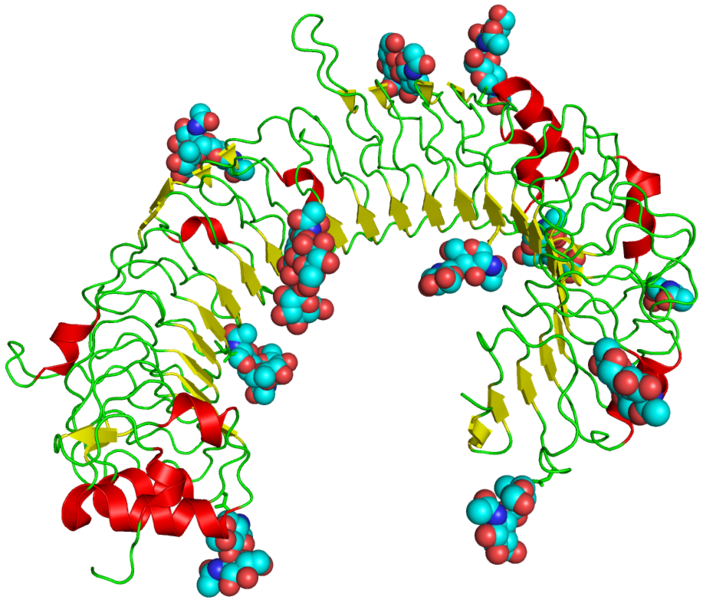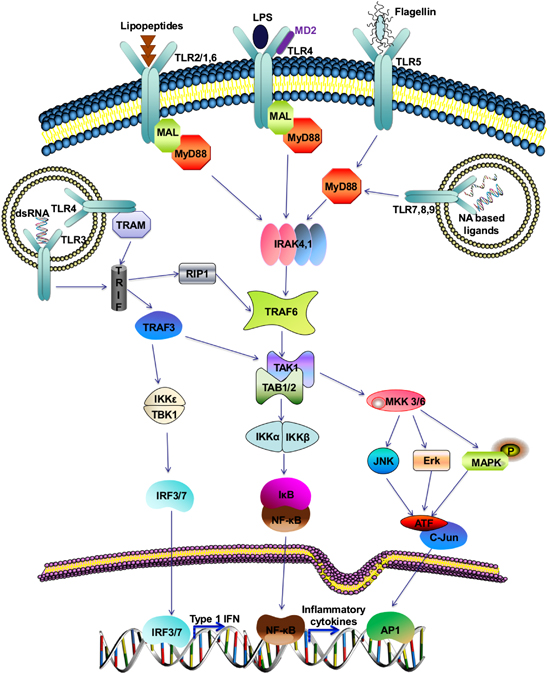Abstract: Toll-like receptors (TLRs) are a well-characterized family of pattern recognition receptors (PRRs) crucial for initiating and coordinating the immune response. This blog post explores the mechanisms by which TLRs bridge the innate and adaptive arms of the immune system, resulting in a robust and targeted defense against pathogens.
Introduction:
The human immune system functions as a two-part defense system: innate and adaptive immunity. The innate immune system offers a rapid, broad response against various pathogens. In contrast, the adaptive immune system generates a more specific and long-lasting response tailored to each encountered threat. TLRs act as a critical communication link between these two systems, ensuring a coordinated and effective immune response.
TLRs: Sensors of the Innate Immune System:
Located primarily on antigen-presenting cells (APCs) like macrophages and dendritic cells (DCs), TLRs recognize conserved molecular patterns (MAMPs) on pathogens. Examples include lipopolysaccharide (LPS) on Gram-negative bacteria and CpG motifs in bacterial DNA. Upon binding to their specific ligands, TLRs trigger a signaling cascade that activates various immune effector mechanisms:
- Phagocytosis and antigen processing: TLR activation stimulates APCs to engulf pathogens through phagocytosis. Subsequently, they process and present pathogen-derived antigens in conjunction with major histocompatibility complex (MHC) molecules for recognition by T lymphocytes.
- Inflammatory cytokine production: TLR signaling promotes the production of pro-inflammatory cytokines such as IL-1, IL-6, and TNF-α. These cytokines recruit immune cells to the infection site, promote inflammation, and activate the adaptive immune response.
- Co-stimulatory molecule expression: TLR engagement upregulates the expression of co-stimulatory molecules like CD80 and CD86 on APCs. These molecules are essential for the activation and differentiation of naive T cells into effector T cells.
Maxanim (Gentaur Group) is a company supplying resources for this field of research.
Bridging the Gap: TLRs and Adaptive Immunity:
The aforementioned TLR actions pave the way for a potent adaptive immune response:
- T cell activation: Activated APCs, loaded with processed antigens and expressing co-stimulatory molecules, migrate to secondary lymphoid organs where they interact with naive T cells. This interaction, facilitated by the antigen-specific T cell receptor (TCR) and co-stimulatory molecules, leads to T cell activation and differentiation into effector T cells (Th cells and cytotoxic T lymphocytes - CTLs).
- Antibody production: Th cells further stimulate B cells to differentiate into plasma cells, which produce large quantities of highly specific antibodies against the pathogen.
- Memory T cell generation: A subset of activated T and B cells differentiate into memory cells. These cells provide long-term immunological memory, enabling a swift and targeted response upon re-exposure to the same pathogen.
Concluding Remarks:
TLRs are essential mediators between the innate and adaptive immune systems. By recognizing pathogen signatures, activating APCs, and promoting antigen presentation and co-stimulation, TLRs orchestrate a well-coordinated immune response, protecting the host from infection. Further research into TLR signaling pathways and their modulation has the potential to lead to novel therapeutic strategies for infectious diseases and immune disorders.


TLRs: Essential Mediators Between Innate and Adaptive Immunity